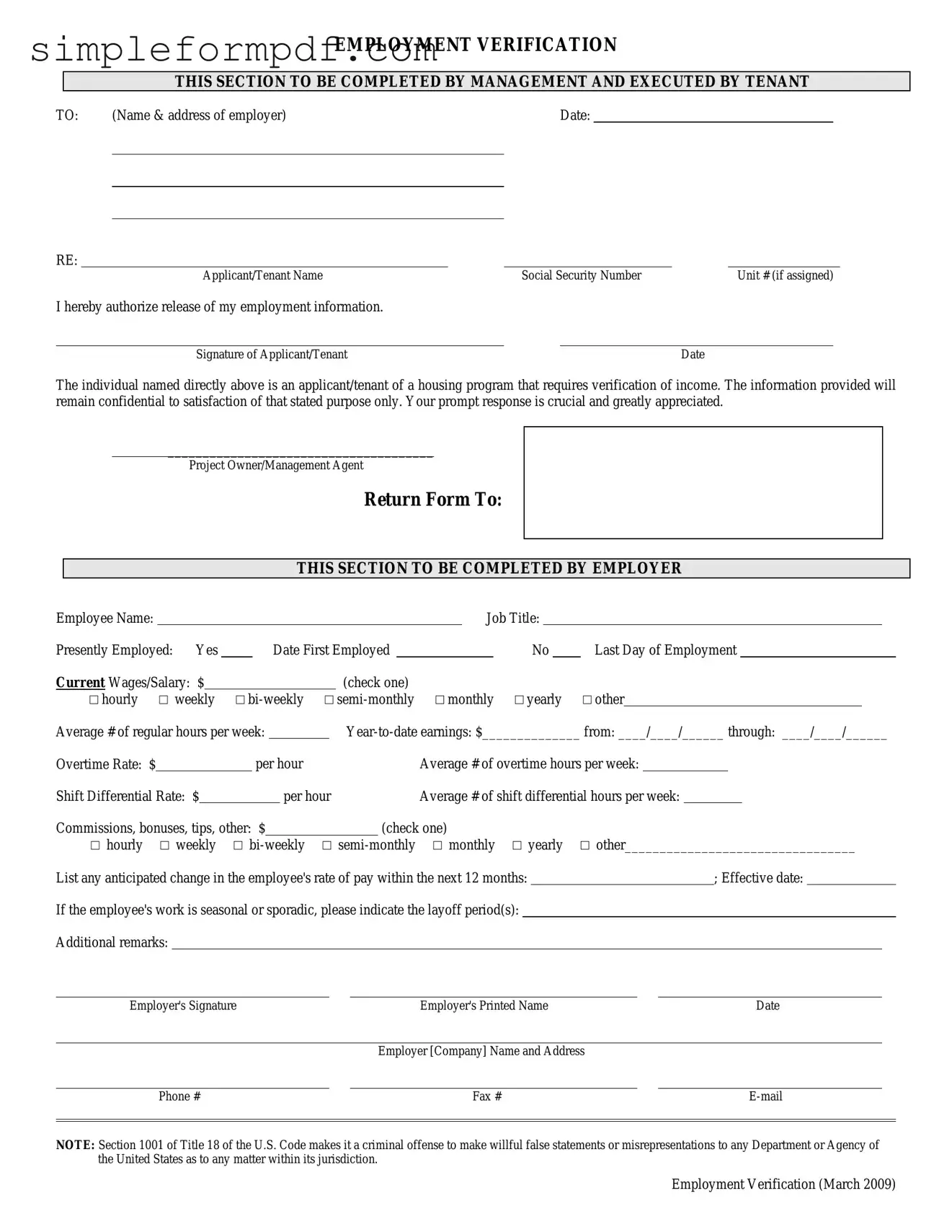
EMPLOYMENT VERIFICATION
THIS SECTION TO BE COMPLETED BY MANAGEMENT AND EXECUTED BY TENANT
TO: |
(Name & address of employer) |
Date: |
|
|
|
|
|
|
|
|
|
RE:
Applicant/Tenant Name |
|
Social Security Number |
|
Unit # (if assigned) |
I hereby authorize release of my employment information.
Signature of Applicant/Tenant |
|
Date |
The individual named directly above is an applicant/tenant of a housing program that requires verification of income. The information provided will remain confidential to satisfaction of that stated purpose only. Your prompt response is crucial and greatly appreciated.
______________________________________
Project Owner/Management Agent
Return Form To:
THIS SECTION TO BE COMPLETED BY EMPLOYER
Employee Name: |
|
|
|
|
|
|
|
|
|
|
|
|
|
|
|
Job Title: |
|
|
|
|
|
|
|
|
Presently Employed: |
Yes |
|
|
|
Date First Employed |
|
|
|
|
|
No |
|
Last Day of Employment |
|
Current Wages/Salary: $ |
|
|
|
|
|
|
|
|
(check one) |
|
|
|
|
|
|
|
|
|
|
|
|
|
|
□ hourly |
□ weekly |
□ bi-weekly |
□ semi-monthly |
□ monthly |
□ yearly |
□ other |
Average # of regular hours per week: |
|
|
|
Year-to-date earnings: $______________ from: ____/____/______ through: ____/____/______ |
Overtime Rate: $ |
|
|
|
|
|
per hour |
|
|
|
|
|
Average # of overtime hours per week: |
|
|
Shift Differential Rate: $ |
|
|
|
|
|
per hour |
Average # of shift differential hours per week: |
|
|
Commissions, bonuses, tips, other: $ |
|
|
|
|
(check one) |
|
|
|
|
|
|
|
|
|
|
|
□ hourly |
□ weekly |
□ bi-weekly |
□ semi-monthly |
□ monthly |
□ yearly |
□ other_________________________________ |
List any anticipated change in the employee's rate of pay within the next 12 months: |
|
|
|
|
; Effective date: |
|
If the employee's work is seasonal or sporadic, please indicate the layoff period(s):
Additional remarks:
Employer's Signature |
|
Employer's Printed Name |
|
Date |
|
|
|
|
|
|
|
|
|
Employer [Company] Name and Address |
|
|
|
|
|
|
|
|
|
Phone # |
|
Fax # |
|
E-mail |
|
|
|
|
|
|
|
|
|
|
|
|
|
NOTE: Section 1001 of Title 18 of the U.S. Code makes it a criminal offense to make willful false statements or misrepresentations to any Department or Agency of the United States as to any matter within its jurisdiction.
Employment Verification (March 2009)

